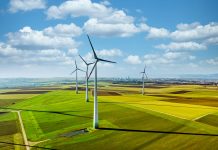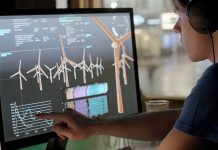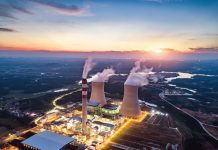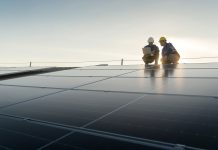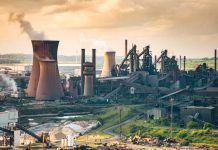Dennis Jul Pedersen from the Port of Esbjerg outlines the initiatives for a hydrogen economy from Esbjerg, Denmark, in this insightful commentary
The Danish Government has just established a hydrogen pipeline from Esbjerg on the West Coast of Denmark to Germany. Esbjerg is a vibrant city, which, despite its young age of 155 years, has significantly impacted the Danish and European energy markets. The first horizontal wells were drilled in the Danish waters, and Esbjerg has always served as a hub for the oil and gas industry. The rejuvenated Tyra Fields recently commenced gas production, which will serve the European markets for many decades.
Moreover, the port of Esbjerg has just decided to build the first phase of a CO2 terminal, which will augment the future carbon capture and storage market, which is integral to the European green transition. Finally, the Port of Esbjerg is an epicentre for offshore wind and has so far contributed to the erection of half of the offshore wind farms in Europe.
Establishing the European hydrogen economy
The hydrogen infrastructure from Denmark to Germany will support establishing the European hydrogen economy, which is specifically interesting for the hard-to-abate sector, represented by the petrochemicals, cement, and steel industries. Therefore, logic prevails when Denmark, with enormous offshore wind potential in the North Sea and significant gas fields, prepares the infrastructure to support its highly developed industrial neighbours with blue and green hydrogen.
The political courage in reaching for the green transition is evident in Denmark and Germany. Still, it will be the actors in these complex industries who will have to put the puzzle together in a way that sound business acumen prevails. Notwithstanding the need to factor in the value of curbing greenhouse gases, industry shifts commence when one energy form is scarce, or the alternative provides economic benefits. Debatably, the hydrogen economy lacks availability and is a costly alternative to the current situation. The situation represents the green transition, which generally is a quagmire of solutions with only one common denominator: to reduce
CO2 emissions.
The infrastructure being established as a pipeline between the two-gigawatt hydrogen production in Esbjerg and the future customers in Germany represents the initial phase, but the argument of cost to the industry and its effect on competitiveness cannot be neglected in pursuing a climate target. The greenification of hard-to-rate sectors must coincide with their ability to survive in financial terms, and for this to mature, the business models may have to be changed. In this context, it may be argued that the collaboration seen in Europe to set forth the targets to reduce emissions must also be ignited to create the change that societies desire and the climate needs.
The geopolitical situation for green energy projects
To nudge the change by penalising one form of energy production to subsidise another is a balancing act, which envisions a closed wall and complete control situation. Conversely, we have seen significant shifts in the energy supply within the last decade, ranging from the large shale gas depositions in the United States allowing for exports to the abandonment of Russian gas to Europe.
The geopolitical situation may resemble a black swan situation from the eyes of the decision maker, who has to make the financial appraisal for green energy projects with long payback periods, albeit the principle of helping the neighbour should limit the risk exposure. Myriads of solutions could be imagined, and the argument to explore all of these is valid when the climate is at stake.
Imagine a cement producer investing in an offshore wind farm which supplies the green electrons needed to produce the hydrogen for the required injection to greenify their plants. Today, the cement producers’ incentive to embark on the green transition is foremost derived from their environmental targets while nudged by the carbon tax.
However, by considering vertical integration, production costs may stabilise, and energy can be secured, although this solution comes with significant challenges in today’s regulatory environment. Irrespective of vertical integration is the future business model for embracing the green transition and embarking on the hydrogen economy, one may argue that collaboration is instrumental when pawing the road to a greener future.
Is the infrastructure imperative for the green transition in Europe?
However, it all starts with the infrastructure. This notion also includes the ports, wherefore the decided hydrogen pipeline from Esbjerg to Germany also required Port Esbjerg to act. A conventional approach for an emitter needing hydrogen would be the static supply chain approach, sourcing the hydrogen from the lowest-cost provider. This could mean that hydrogen will be shipped in the form of ammonia, cracked in a port and piped to Germany in the future.
Ammonia is seen as an efficient hydrogen carrier. Equally important, the supply chain with the possibility for the lowest cost of production to the country of use can be established with today’s technology. Therefore, the technology readiness level is high, and this should guarantee early implementation.
The infrastructure is imperative for the green transition in Europe, but swift implementation is crucial in the race to curb emissions. Hydrogen will be one of the solutions, albeit neither the industry nor the economy surrounding this commodity has been established. The question remains on which learnings from establishing other industries can be taken forward and adapted to the current situation.
In this case, it should be noted that time is of the essence, and therefore, the change may need public support. Such support must embrace the complete supply chain, which in return must provide implementation readiness. The era of declarations, studies, research, and pilots must be extended with the full-scale implementation of transport, ports, and pipelines ready to transport hydrogen to the hard-to-abate sectors.

This work is licensed under Creative Commons Attribution-NonCommercial-NoDerivatives 4.0 International.


